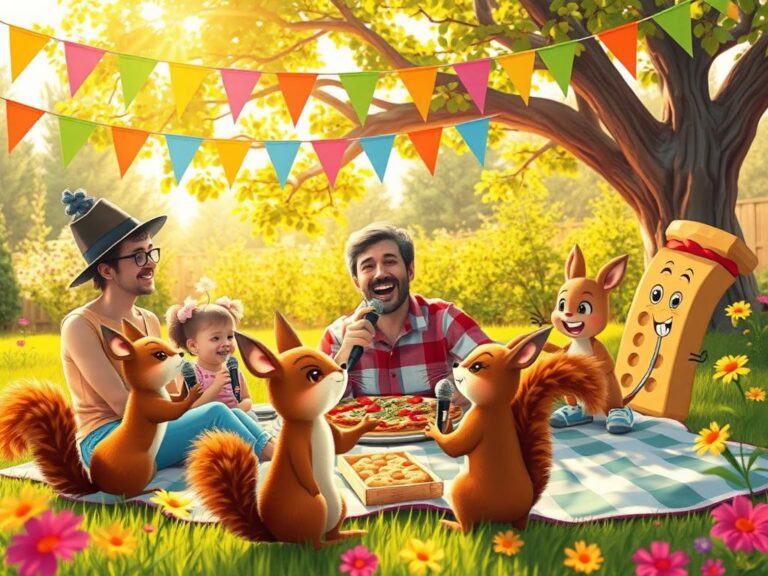50 New Year’s Day Traditions from Around the World
Introduction
New Year’s Day traditions span across the globe, creating a rich tapestry of cultural practices celebrated worldwide.
Each country has its own unique customs and rituals that embody the hopes, aspirations, and reflections people hold as they transition into a new year.
From excited gatherings filled with delicious food to solemn ceremonies honoring ancestors, these traditions paint a vivid picture of how diverse humanity celebrates new beginnings.
Let’s dive into 50 fascinating New Year’s Day traditions from around the world, showcasing the joyous and sometimes quirky ways people ring in the new year.
Prepare to be inspired as we explore customs that embody hope, renewal, and cherished memories.
The Significance of New Year’s Celebrations
Celebrating New Year’s is like hitting a reset button for many people.
As the clock strikes midnight, hearts fill with hope and excitement for the possibilities that lie ahead.
For some cultures, the New Year signifies new beginnings, while for others, it’s a time for honoring traditions and ancestors.
These celebrations often encapsulate the essence of the local culture, reflecting values, beliefs, and communal ties.
It’s amazing how these practices unify people through shared experiences, even if the specifics differ from place to place.
So, get ready as we explore how 50 countries around the globe usher in the New Year.
Celebrations in Asia
1. **Japan – Hatsumode**: In Japan, the New Year is marked by Hatsumode, the first shrine visit of the year.
People flock to shrines to pray for health and prosperity.
There is a sense of community as families gather, wearing traditional attire, and offering their wishes for the coming year.
2. **China – Family Reunion Dinner**: For the Chinese, the New Year represents family reunion and harmony.
The reunion dinner is a time for delicious feasting, often featuring dumplings and fish to symbolize prosperity ahead.
3. **Philippines – Round Foods**: Eating round fruits in the Philippines symbolizes wealth and prosperity.
You’ll find tables adorned with round-shaped foods, reflecting the belief that circles attract good fortune.
4. **South Korea – Seollal**: The Lunar New Year, known as Seollal, is celebrated with family gatherings that center around honoring ancestors through rituals and enjoying rice cake soup (tteokguk).
5. **Vietnam – Tết Nguyên Đán**: Similar to the Chinese New Year, Tết is characterized by family reunions, cleaning homes to sweep away bad luck, and honoring ancestors in a festive atmosphere.
Festivities in the Americas
6. **Brazil – Offerings to Yemanjá**: Brazilians hold a beach celebration on New Year’s Eve by throwing flowers and gifts into the sea for Yemanjá, seeking blessings and good fortune.
7. **Mexico – Red and Yellow Underwear**: In Mexico, many wear red underwear to attract love and yellow for wealth on New Year’s Eve.
It’s a playful yet hopeful tradition that many believe will bring success in the new year.
8. **Colombia – Suitcase Ritual**: Colombians carry empty suitcases around the block to symbolize traveling.
This quirky tradition speaks to the aspirations of adventure and exploration in the coming year.
9. **Ecuador – Burning Effigies**: Ecuadorians create effigies called monigotes that represent the past year and burn them as a way to let go of the old and embrace fresh starts.
European Traditions
10. **Scotland – First Footing**: In Scotland, the first person to enter a home after midnight brings cheer—ideally, carrying a gift.
This is done to ensure prosperity and luck for the year ahead.
11. **Greece – Vasilopita**: Greeks bake a special cake, Vasilopita, with a hidden coin.
The person who finds the coin is deemed lucky for the year, fostering community and togetherness.
12. **Spain – Twelve Grapes**: As the clock strikes midnight, Spaniards eat twelve grapes, one for each chime, as a way to bring good luck for every month ahead.
13. **Ireland – The First Foot**: Similar to Scotland, the “first foot” traditions hold a significant place in Irish culture as well.
The first visitor to a household after midnight brings good fortune for the residents.
14. **Finland – Molten Tin**: In Finland, New Year’s celebrations include melting tin and dropping it into water, interpreting the shapes as forecasts for the coming year.
Colorful Celebrations from Africa
15. **South Africa – Fireworks**: South Africans celebrate with grand fireworks displays, lighting up the sky to bid farewell to the old year and welcome the new.
16. **Ghana – Going to the Coast**: Ghanaians mark the New Year by visiting coastal areas to pray for blessings from the sea, emphasizing spirituality in their celebrations.
17. **Egypt – Making Lots of Noise**: Egyptians celebrate with loud fireworks, clapping, and bells to ward off evil spirits, emphasizing the significance of happiness and joy.
Unique Practices from Oceania
18. **Fiji – Tapa Ceremony**: Fijians celebrate with traditional tapa-making and communal feasting, emphasizing community spirit and cultural heritage.
19. **Samoa – New Year’s Feasts**: In Samoa, large family feasts filled with traditional dishes offer a hearty welcome to the New Year.
Intriguing Celebrations from the Middle East
20. **Iran – Nowruz**: In Iran, the Persian New Year highlights renewal and rejuvenation.
People prepare a special table, Haft-Seen, featuring symbolic items that encourage abundance and growth.
Engaging New Year’s Customs from Around the World
21. **Indonesia – Nyepi**: Balinese celebrate the New Year with a day of silence and reflection known as Nyepi, where all activities come to a halt, allowing for introspection.
22. **Kazakhstan – Nauryz Meyrami**: Celebrated at the spring equinox, this festival celebrates renewal and unity with family feasting and traditional songs.
23. **Thailand – Songkran**: The Thai New Year, or Songkran, features massive water fights to signify purification and renewal.
24. **Turkey – Pomegranate**: Turkish New Year traditions often include eating pomegranates, which symbolize abundance and fertility.
Sweet Spins on New Year’s Celebrations
25. **Belgium – Cake and Chocolate**: In Belgium, indulging in sweet cakes and chocolates is a delightful way to sweeten the New Year.
26. **Sweden – Dancing and Singing**: Swedes enjoy singing traditional songs and dancing all through the night, filling the air with joy and camaraderie.
27. **Switzerland – Ice Cream for Good Luck**: Enjoying ice cream on New Year’s Day is a quirky Swiss tradition believed to bring good fortune.
Creative Representations of New Year’s Aspirations
28. **Brazil – White Clothing**: In Brazil, wearing white symbolizes peace and renewal, a tradition that fosters a collective wish for harmony in the coming year.
29. **Italy – Cotechino and Lentils**: Italians believe that eating lentils and zesty cotechino brings prosperity, making it a staple dish on New Year’s Eve.
30. **Denmark – Smash Plates**: In Denmark, breaking old plates at friends’ doors is a tradition symbolizing friendship and good fortune.
Echoes of Family and Togetherness
31. **Puerto Rico – Water Bucket Ritual**: In Puerto Rico, a bucket of water tossed out the window signifies discarding negativity from the previous year.
32. **Sri Lanka – New Year with Water**: The Sinhalese and Tamil populations celebrate the New Year with water festivities where playful water splashes symbolize cleansing and new beginnings.
The Lasting Imprint of New Year’s Traditions
33. **Latvia – Singing at Midnight**: Latvians partake in singing traditional songs at midnight, aiming to welcome the joy of the coming year.
34. **Somalia – Visiting Relatives**: In Somalia, visiting loved ones during the New Year embodies the spirit of togetherness and the value of family.
35. **Algeria – L’Ajin Harsha**: Traditional semolina cakes served during festivities showcase the deep connection folks have to cultural heritage.
36. **Mali – New Year Griots**: Griots share stories and orally pass down traditions, highlighting the importance of history and celebration in celebrating the New Year.
37. **Estonia – Eating Seven Times**: Esteemed traditions believe eating seven times on New Year’s Eve brings prosperity, a playful yet hopeful custom.
Conclusion
New Year’s Day traditions encapsulate the universal desire for new beginnings, community, and hope for the future.
Each custom tells a story of cultural values while encouraging togetherness and joy.
From shared meals to quirky rituals, these traditions connect us to one another on a deeper level and remind us of the beauty in diversity.
There’s so much we can learn and share as we celebrate the coming of the New Year.
As you reflect on your own traditions, consider incorporating elements from around the world, creating a unique celebration that resonates with your family and friends.
Your New Year’s celebration can become a beautiful blend of cultures, promoting unity and hope.
FAQ
What are some common New Year’s Day traditions around the world?
There are numerous fascinating New Year’s Day traditions across the globe.
For instance, in Spain, it’s customary to eat twelve grapes at midnight, while in Brazil, people throw flowers into the ocean as offerings to Yemanjá.
What does the practice of “first footing” mean?
“First footing” is a Scottish and Irish custom where the first visitor entering a home after midnight brings gifts to ensure prosperity for the year.
This practice reinforces the importance of community ties and friendship.
How do different cultures view the New Year?
Different cultures view New Year’s Day as a time for renewal and reflection.
In many societies, it emphasizes starting afresh and clearing negativity, fostering hope for prosperity and joy.
Why do people engage in symbolic foods during New Year celebrations?
Symbolic foods represent abundance and good fortune.
For instance, many cultures serve dishes with lentils, pomegranates, or round foods to signify their wishes for wealth in the coming year.
How can I incorporate global traditions into my own New Year’s celebration?
You can create a unique celebration by integrating elements of various traditions, such as cooking traditional dishes from different cultures or introducing symbolic practices related to good fortune.
This allows for a richer experience that honors diversity and unity.
Feel free to share your own thoughts, experiences, or traditions in the comments section below!







